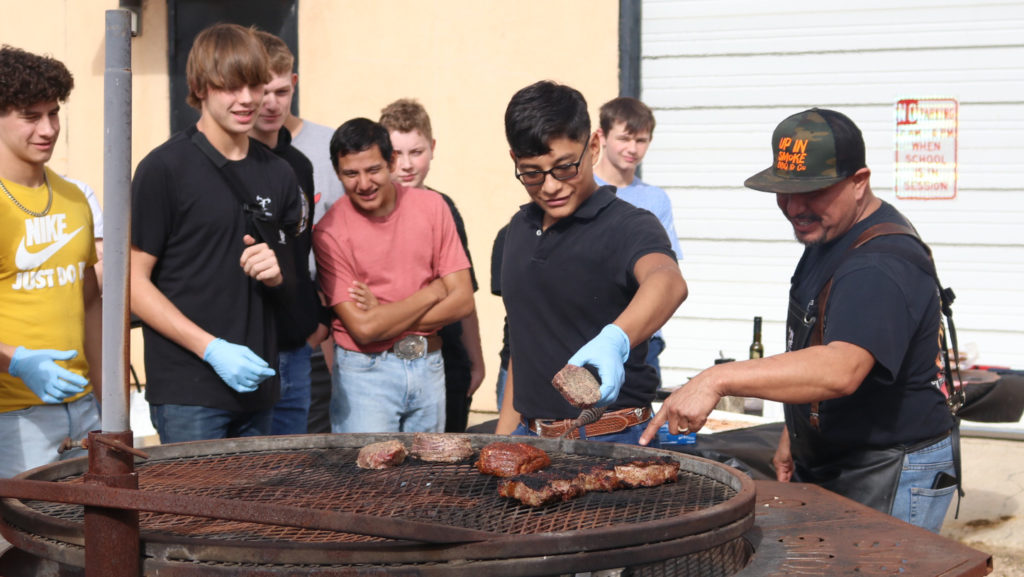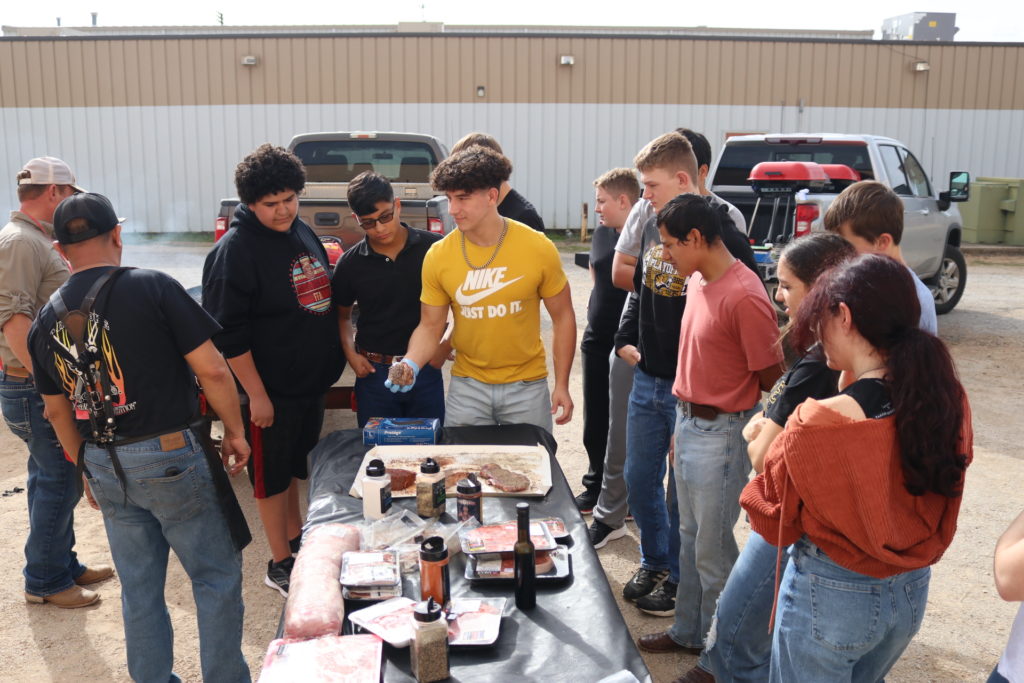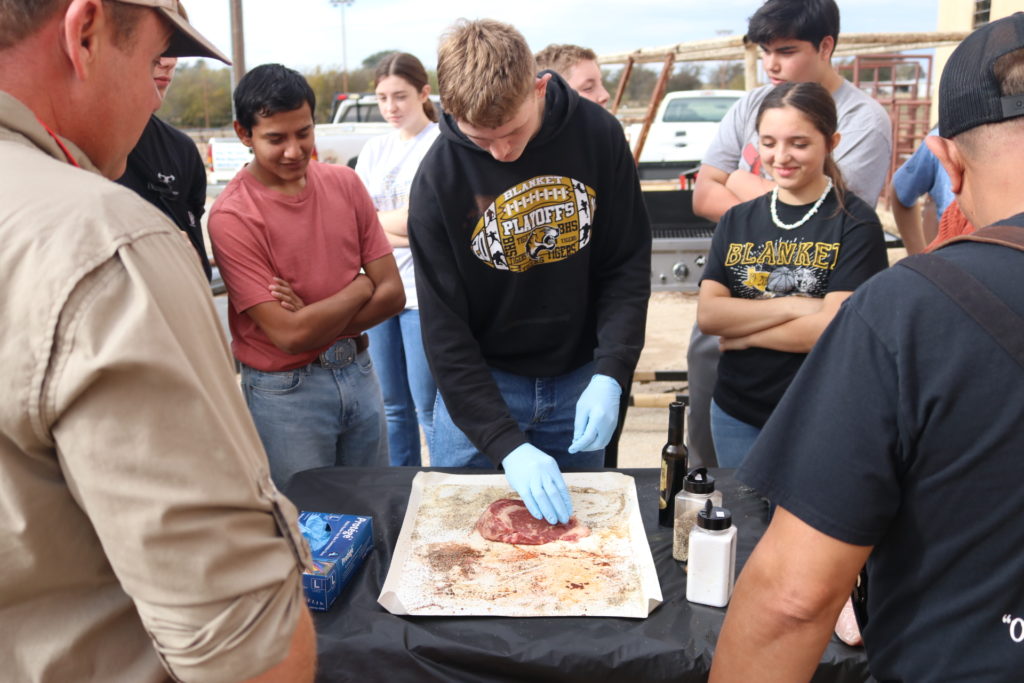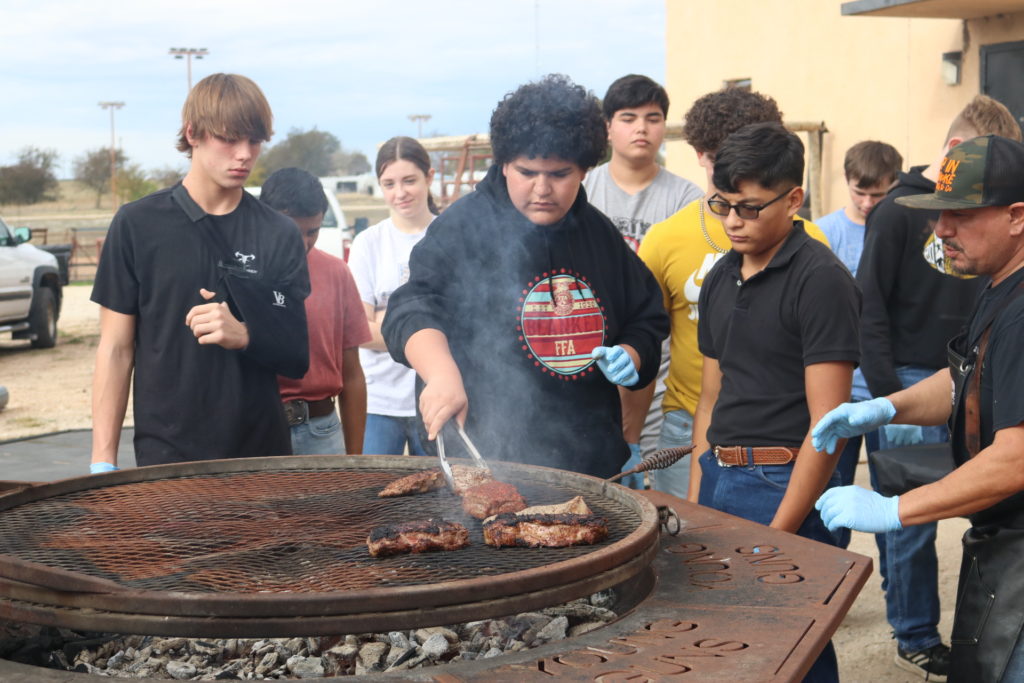
BLANKET — Livestock Education: Path to the Plate, a three-week class taught by Brown County Agrilife Extension Agent Nick Gonzales that educates students where meat products come from and how the product ends up on their plate, culminated at Blanket High School Tuesday morning with students cooking and sampling different cuts of meat.
Among Tuesday’s special guests were Mills County Agrilife Extension Agent Tom Guthrie and Junior Urias, owner of Up In Smoke BBQ in Early. Both individuals guided and assisted students in the cooking process.
“Tom is the Ag and Natural Resource agent in Mills County and he does a lot of cooking for a lot of Extension programs, so he was more than happy to help us,” Gonzales said. “One of our big guests we have is Junior Urias from Up In Smoke BBQ. He was so excited to come out and bring some cuts of meat and talk to the kids about breaking it down and seasoning it and so forth.”
Blanket High School is the first in Brown County to experience Livestock Education: Path to the Plate.
“We focused on the Blanket Ag class here and this is the first time we’re doing it,” Gonzales said. “We’re hoping to open it up and do it at more schools throughout Brown County. Seeing this program get off the ground, hopefully it becomes bigger and better as it grows.”
Blanket student Dallas Moreno said, “I really like it. I’ve learned a lot from it. I personally did not know how they processed the meat — how they go from the cows to the factory and how we get our meat on our plate — and I learned how they did that. I think it’s pretty interesting and it was cool that I had the chance to learn that.”
Fellow Blanket student Oscar Avila added, “I think the class is pretty cool. He likes getting us involved inside the class. He always makes sure we understand everything and he’s always asking us questions. I knew a little bit about how this happened but there were a couple of things that surprised me.”
Gonzales spoke about the decision to begin the Livestock Education: Path to the Plate program.
“I’ve been doing livestock judging as a program for Extension for Brown County 4-H and I wanted to dive into more details on different things,” Gonzales said. “I took the lessons I teach my livestock judging teams and expanding that to what I was teaching at Sam Houston State when I was a grad student there teaching animal science classes. So we developed here in Brown County and put the curriculum together for what we call Livestock Education: Path to the Plate. There’s not another curriculum out there that’s this put together, there’s just parts and pieces. Hopefully this is something other counties can use in classes.”
As for the benefits of the class, Gonzales said, “What it does is educate the students on where their products come from and how it gets to their plate. We went into the production standpoint on cow-calf operations, cattle farrow-to-finish operations, along with hogs, sheep and goats. From there, we went into the selection process, taking them to the feed lot, what animals are we needing for the terminal aspect of it and which ones are we going to keep for the maternal side that we breed back to get the quality meat consumers are looking for. Then from there we went into the harvesting process from start to finish after they get to the market weight. We then break that down into after harvest and cuts of the carcass from the chuck to the loin to the sirloin to the round when we talk cattle. With hogs, we talk shoulder, the loin and the ham, and we also went into that on the sheep and goat side.”
Gonzales is hopeful the process will open the door to more types of meat being purchased by the families of students in the class.
“We want them to have an understanding of why a rib-eye is what it is, why a brisket is what it is, why a round steak is what it is, and then the price of those,” Gonzales said. “They got an understanding of this is where this part is coming from, what is used more for movement in livestock is going to be a tougher cut of meat compared to our steaks that are primal cuts that we use. From there we went into the final part, which is what we are here for today and that’s to cook those and the kids can taste what a rib-eye, sirloin and tenderloin are because as you move through that carcass those meats will have different flavors, different textures. Those those kids could find something they are interested in and like at the grocery store and talk to their families about it because a lot of families won’t purchase off cuts because they don’t know what it is.”
Gonzales reiterated he does intend to teach the class at other school districts in the county, and both Avila and Moreno strongly suggested other students should experience the program.
“I like this part,” Avila said of the cooking and sampling, “but I really did enjoy the class. It was very educational, very fun.”




